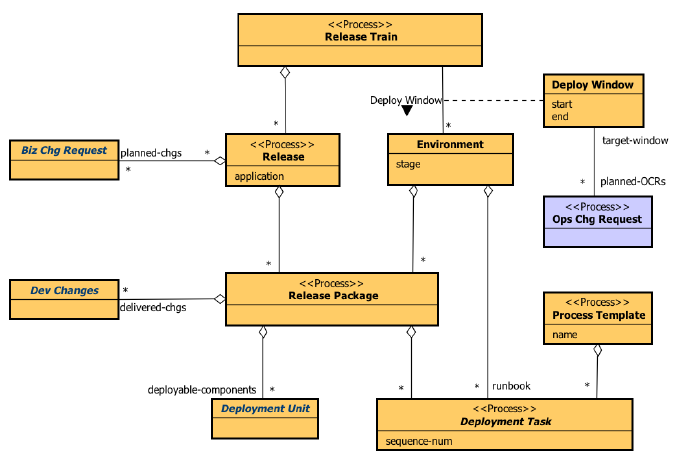
The following domain model describes the key objects that comprise Release Management, and their relationships to each other.

Release trains provide published schedules of changes to production. One or more application releases are associated with each release train.
Release trains have types of major, minor, and emergency. These are used to determine the stages the releases go through as well as drive release policies on what types of changes may be delivered.
A release train may be related to any number of releases, and to any number of stages.
Releases are associated with an application or project, where the application or project architecture is specified by components. One or more release packages are associated with each application release.
Releases may be related to any number of release packages. Releases are also related to the CMDB application that is used as the release vault.
A release package is a portion of IT or service infrastructure normally built, deployed, tested, and released together. Release packages group changes within an application release. One or more development change requests and deployment units are associated with each release package.
A change request is an object used to report a defect, suggest an enhancement, or detail other work for a particular product. Requests can include external files (such as requirements or specification documents) as attachments. Release change requests may also be related to other types of change requests, such as development change requests or operational change requests.
A deployment unit is a representation of a set of deployable components, such as a Dimensions CM baseline with build outputs.
An environment is a physical computer and operating system on which software resides; for example, a Windows or UNIX server.